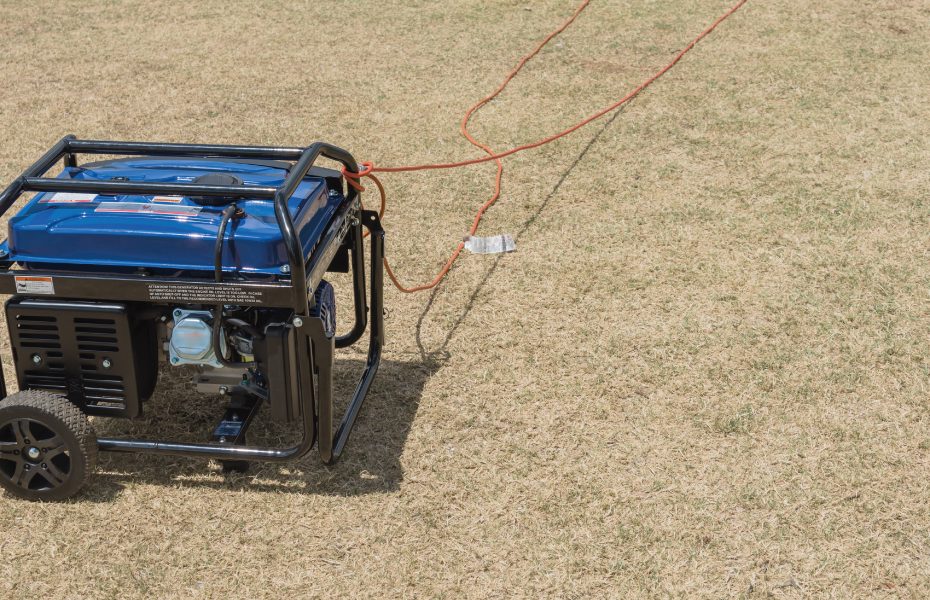Gasoline generators are a portable source of power that can come in handy during power outages, camping trips, or any other situation where electricity is needed. However, like any other mechanical device, a gasoline generator requires maintenance to ensure that it runs smoothly and lasts for a long time. In this blog post, we will discuss how to maintain a gasoline generator to prolong its lifespan and avoid common problems.
Basic Maintenance of a Gasoline Generator:
- Checking the oil levels regularly: Oil is a crucial component of a gasoline generator, and it is essential to check the oil levels regularly to prevent engine damage. Most generators come with a dipstick that indicates the oil level. The oil level should be between the upper and lower marks on the dipstick. If the oil level is low, add the recommended oil to bring it up to the proper level.
- Changing the oil and oil filter at regular intervals: Oil and oil filters should be changed at regular intervals to prevent engine damage and ensure optimal performance. Consult your generator’s manual for the recommended oil and oil filter change intervals. Typically, oil and oil filters should be changed after every 50-100 hours of use.
- Inspecting and replacing the air filter as necessary: The air filter prevents dirt and debris from entering the generator’s engine. Inspect the air filter regularly and clean or replace it as necessary. A dirty or clogged air filter can cause poor engine performance, increased fuel consumption, and engine damage.
- Checking the fuel levels and adding fresh fuel: Check the fuel levels regularly and add fresh fuel as necessary. It is recommended to use fresh fuel that is less than 30 days old to prevent engine damage. Stale fuel can cause starting problems, poor engine performance, and clogged carburetors.
- Checking the spark plug and replacing it if necessary: The spark plug is responsible for igniting the fuel in the engine. Inspect the spark plug regularly and replace it if it is fouled, worn, or damaged. A bad spark plug can cause starting problems, poor engine performance, and reduced fuel efficiency.
Tips for Maintaining a Gasoline Generator:
- Store the generator in a clean, dry, and well-ventilated area: Proper storage is crucial to prevent rust, corrosion, and damage to the generator’s components. Store the generator in a clean, dry, and well-ventilated area away from direct sunlight, moisture, and extreme temperatures.
- Run the generator regularly to prevent rust and deposits from forming: Running the generator regularly helps prevent rust and deposits from forming in the engine and fuel system. It also keeps the battery charged and prevents the carburetor from getting clogged.
- Clean the generator after each use to prevent dust, dirt, and debris from building up: Clean the generator after each use to prevent dust, dirt, and debris from building up on the engine and components. Use a soft brush and compressed air to clean the engine and components thoroughly.
- Check the battery regularly and replace it when necessary: The battery provides power to start the generator, and it should be checked regularly for signs of wear or damage. Replace the battery if it is corroded, leaking, or not holding a charge.
- Inspect the generator for any signs of wear or damage and repair as necessary: Inspect the generator regularly for signs of wear or damage, such as frayed wires, loose connections, or cracks in the housing. Repair any damage immediately to prevent further problems and ensure optimal performance.
Common Problems with Gasoline Generators and How to Troubleshoot Them:
- Generator won’t start: Check the fuel level, spark plug, and battery to ensure that they are functioning correctly. Check the choke and throttle settings and try starting the generator again.
- Generator runs poorly: If the generator is running poorly or erratically, it may be due to a clogged air filter, dirty fuel, or a faulty spark plug. Check and clean the air filter, drain the fuel tank and add fresh fuel, and replace the spark plug if necessary.
- Generator produces no power: If the generator produces no power, it may be due to a blown fuse, faulty circuit breaker, or damaged alternator. Check the fuses and circuit breakers and replace if necessary. If the alternator is damaged, it may require professional repair or replacement.
- Generator produces low power: If the generator is producing low power, it may be due to a clogged air filter, dirty fuel, or a damaged alternator. Check and clean the air filter, drain the fuel tank and add fresh fuel, and have the alternator inspected or replaced if necessary.
- Generator shuts off automatically: If the generator shuts off automatically, it may be due to a low oil level, faulty spark plug, or faulty circuit breaker. Check the oil level and add oil if necessary. Check the spark plug and replace if necessary. If the circuit breaker is faulty, it may require professional repair or replacement.
Conclusion:
Maintaining a gasoline generator is essential to ensure that it runs smoothly and lasts for a long time. Regular maintenance includes checking the oil levels, changing the oil and oil filter, inspecting and replacing the air filter, checking the fuel levels, and checking the spark plug. Additionally, it is crucial to store the generator properly, run it regularly, clean it after each use, check the battery, and inspect it for any signs of wear or damage. If you experience any problems with your gasoline generator, troubleshoot them accordingly to prevent further damage and ensure optimal performance.
